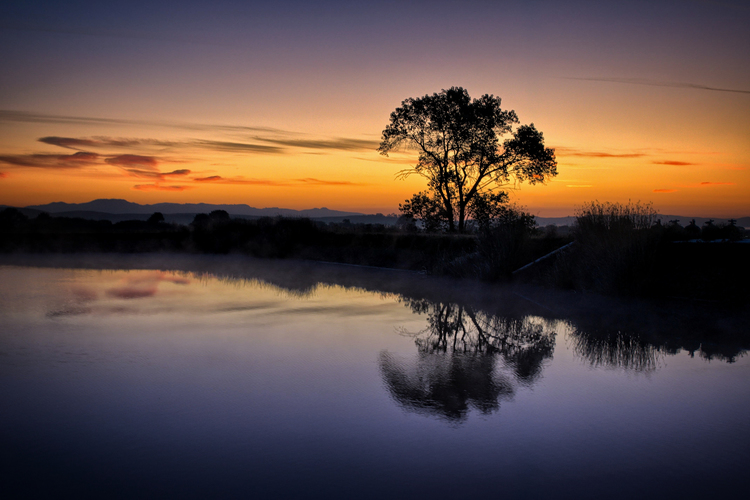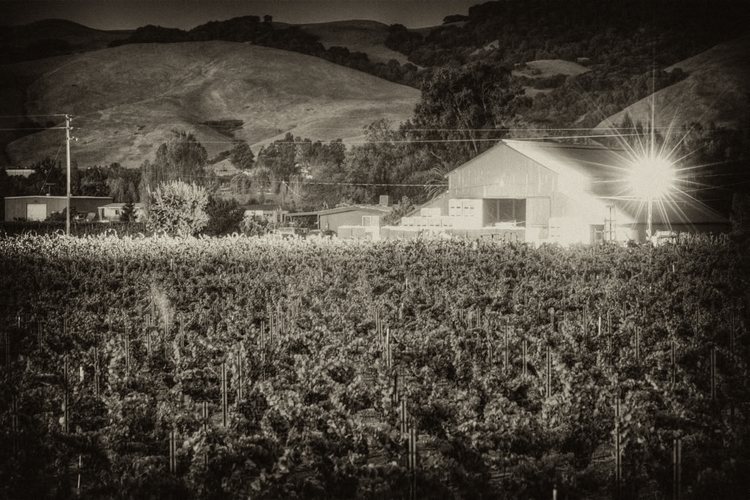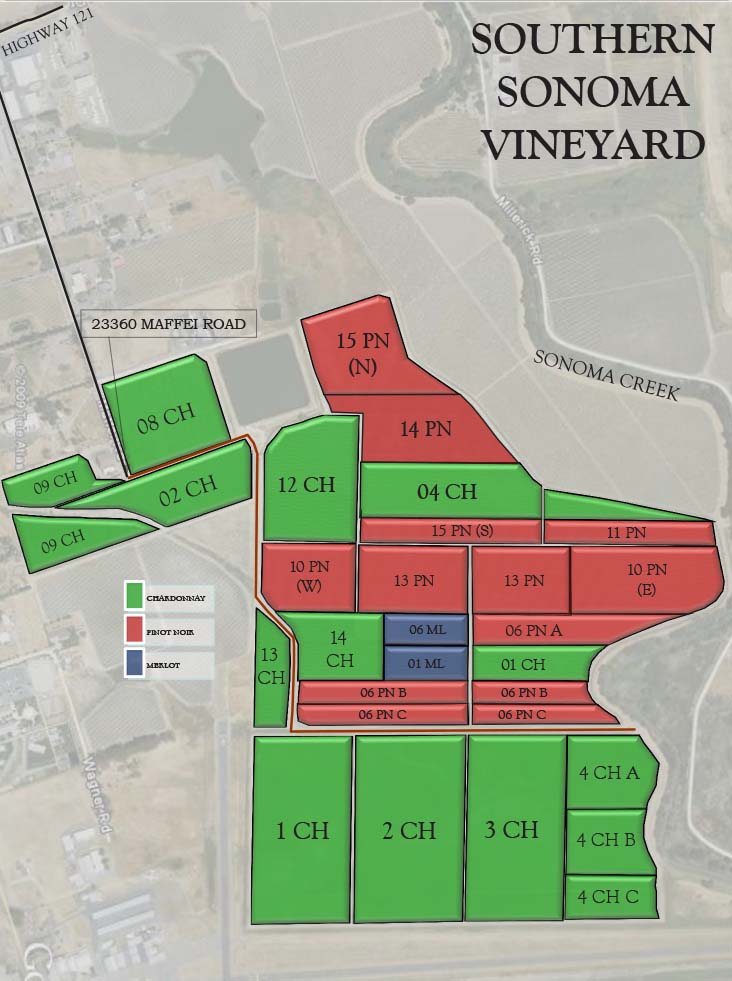We use cookies to optimize your experience, analyze traffic, and personalize content. To learn more, please visit our Privacy Policy.
By using our site without disabling cookies, you consent to our use of them.
Southern Sonoma Vineyard was foundational to our family’s switch from growing pears to grapes in the 1970s.
History
The land now known as Southern Sonoma Vineyard is located at the very southern tip of the Sonoma Valley near the San Pablo Bay.
The land was overlooked when Mexican land grants were issued in the early 1800s. It became the property of the state when California achieved statehood in 1850.
The value of the land was not recognized until Nevada Senator John Perceival Jones had the vision to develop it for agriculture. In 1872, he purchased almost 10,000 acres of low-lying land for $12 an acre and established the Pacific Reclamation Company (later known as the Sonoma Land Company). He brought in Chinese workers to build levees to reclaim the land for hay, grain and pasture. He divided the land into six camps, one of which would later become the Skaggs Island Naval Base in 1941. Year-round farm workers lived and worked on the camps.
Hay grown here was transported by scow from a pier on the property to the Ferry Building in San Francisco where it was fed to the horses of the fire department. As horses gave way to cars in San Francisco, the Sonoma Land Company went bankrupt as the demand for hay fell and the land was sold to the Maffei family.
The Sangiacomo family purchased the land from the Maffei family in 1974.


Vineyard
First planted in 1974, Southern Sonoma Vineyard was the second vineyard planted by the Sangiacomo family and quickly became a foundational vineyard that enabled them to make the leap throughout the 1970s from growing pears to grapegrowing. It is a source of grapes for more than sixteen wineries. Bordered on the east by Sonoma Creek, Southern Sonoma Vineyard has fourteen different combinations of clones and rootstocks. Many years of runoff from the nearby hills have left behind a layer of Zamora topsoil that is rich and silty, yielding grapes to make multi-layered and structured wines. There are two Chardonnay blocks that are organically grown.
-
Certified Sustainable (CSWA)
-
Planted Acreage: 155
-
Varietals: Chardonnay, Pinot Noir and Merlot
-
Appellations: Carneros and Sonoma Coast
